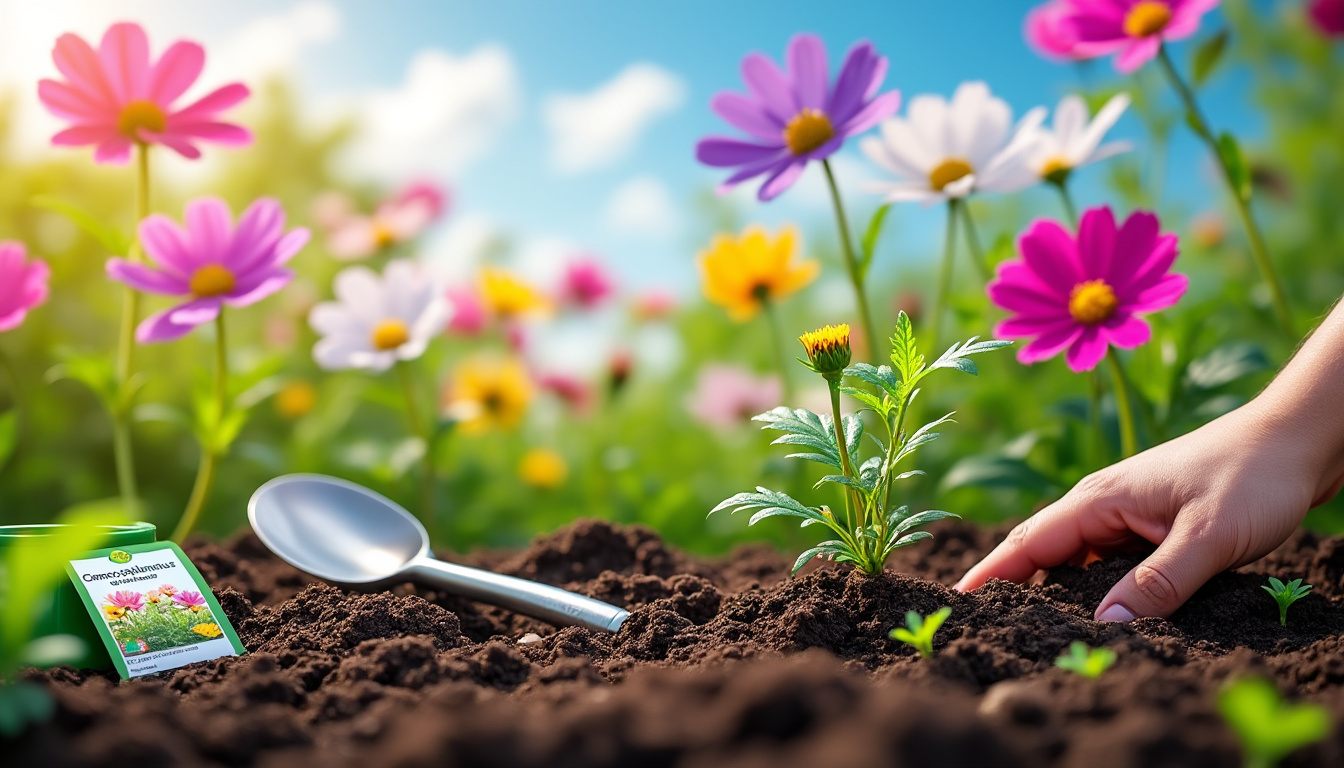Cosmos flowers, with their vibrant colors and beautiful blooms, are a favorite among gardeners. Knowing the right time to plant cosmos seeds is crucial for achieving an impressive display of flowers throughout the summer and into the fall. This guide will navigate through the optimal planting times, proper seed starting techniques, and essential care tips to ensure a successful growing experience.
Table of Contents:
- Determining the Right Time to Plant
- Preparing the Soil
- Starting Cosmos Seeds Indoors
- Direct Sowing Cosmos Seeds
- Caring for Cosmos Seedlings
- Transplanting Cosmos Seedlings
- Maintenance Tips for Healthy Growth
- Dealing with Common Issues
- Harvesting and Saving Cosmos Seeds
- FAQ
Determining the Right Time to Plant
Understanding when to plant cosmos seeds is fundamental for optimal blooming. Cosmos thrive in warm conditions, making spring the ideal time for sowing. In most climates, seeds should be planted after the last frost date. For those living in warmer regions, this may mean sowing as early as late winter.
The general recommendation is to start indoor seedlings about 5 to 7 weeks before the last expected frost. This timing allows for earlier blooms, enhancing the overall flower display. As a rule, plan to transplant them outdoors once the soil has warmed and there is no risk of frost.
Preparing the Soil
Soil preparation plays a crucial role in the successful growth of cosmos. They require well-drained, nutrient-rich soil to flourish. The first step is to test the soil pH, aiming for a range between 6.0 and 7.0, ideally slightly acidic to neutral.
| Soil Type | Characteristics |
|---|---|
| Sandy Soil | Excellent drainage, warms quickly in spring. |
| Clay Soil | Poor drainage, can be amended with organic matter. |
| Loamy Soil | Balanced texture, retains nutrients while providing drainage. |
Incorporating organic material, such as compost, can enhance soil quality, promoting better growth and blooming.
Starting Cosmos Seeds Indoors
Starting cosmos seeds indoors is a strategic method to kickstart growth. Ideal containers include seed trays or biodegradable pots, each with drainage holes. Fill these with a lightweight seed-starting mix to promote healthy root development.
Once planted, maintain a warm temperature of about 70-75°F (21-24°C) and provide ample light. Using grow lights can ensure seedlings receive enough sunlight, crucial for preventing leggy growth.
When to properly prune a fig tree for optimal growth?
Direct Sowing Cosmos Seeds
For gardeners opting for direct sowing, the perfect time is after the last frost, typically in late April through June. Select a sunny spot that receives a minimum of six hours of direct sunlight daily. Spread the seeds a quarter-inch deep and lightly cover them with soil.
Here’s a helpful tip: if soil temperatures are consistently above 60°F (16°C), you can expect successful germination within 5 to 10 days.
Caring for Cosmos Seedlings
Once seedlings have emerged, regular care is crucial. Water them consistently, ensuring that the soil remains moist but not waterlogged. Monitoring soil moisture levels will help prevent issues such as root rot.
| Caring for Seedlings | Practice |
|---|---|
| Watering | Keep soil consistently moist; avoid overwatering. |
| Pest Control | Regularly inspect for pests; use organic methods for treatment. |
| Thinning | Thin seedlings for proper air circulation and space. |
Additionally, deadheading spent blooms can encourage continued flowering throughout the growing season.
Transplanting Cosmos Seedlings
Transplanting cosmos seedlings requires careful attention to avoid transplant shock. Harden off seedlings by gradually introducing them to outdoor conditions over the course of a week before planting them in the garden.
When transplanting, ensure the seedlings are placed at the same depth as they were in their containers. Water them thoroughly after transplanting to help them establish in their new environment.
Maintenance Tips for Healthy Growth
Maintaining cosmos involves several practices. Regular watering, especially in dry spells, is essential. Cosmos prefer a dry environment, so expect to water only during prolonged periods without rain. Applying a balanced fertilizer every 4-6 weeks can promote robust growth.
Note: Ensure plants receive adequate sunlight. Cosmos love sun and can struggle in shaded conditions.
Dealing with Common Issues
Most challenges faced by cosmos plants stem from overcrowding and flopping stems. To address overcrowding, ensure seedlings are spaced adequately during outdoor planting—about 12-18 inches apart is recommended. This spacing allows for optimal growth and flowering.
For preventing flopping, provide support through staking as plants mature, especially those with abundant blooms. Additionally, pinching back the main stem can create a bushier plant, thereby enhancing stability.
Harvesting and Saving Cosmos Seeds
Harvesting cosmos seeds is a rewarding process that allows gardeners to save the best genetics for future planting. To tell when seeds are ready, observe the seed heads. Wait until they turn brown and dry out. The seeds themselves should appear dark brown or black.
| Seed Harvesting Steps | Description |
|---|---|
| Identify Maturity | Look for brown, dry seed heads. |
| Collection | Cut and dry seed heads before extracting seeds. |
| Storage | Store seeds in a cool, dry place to maintain viability. |
Storing seeds in paper bags or envelopes labeled with variety and date will ensure they remain viable for planting in subsequent seasons.
FAQ
Q: When should I start cosmos seeds indoors?
A: Start seeds indoors about 5 to 7 weeks before the last frost date for optimal growth.
Q: Can cosmos be direct-seeded in the garden?
A: Yes, cosmos can be directly sown outdoors once the threat of frost has passed, typically late April through June.
Q: What is the ideal soil type for cosmos?
A: Cosmos prefer well-draining soil that is nutrient-rich; sandy or loamy soils are ideal.
Q: How can I prevent pest issues with cosmos plants?
A: Regularly inspecting plants and using organic pest control methods can help mitigate pest issues.
Q: How can I promote blooming in cosmos plants?
A: Deadheading spent flowers and ensuring adequate sunlight and nutrients will encourage continued blooming.
By following these guidelines, a garden filled with vibrant cosmos blooms is well within reach. With consistent care and attention, these flowers will enhance any outdoor space.
















